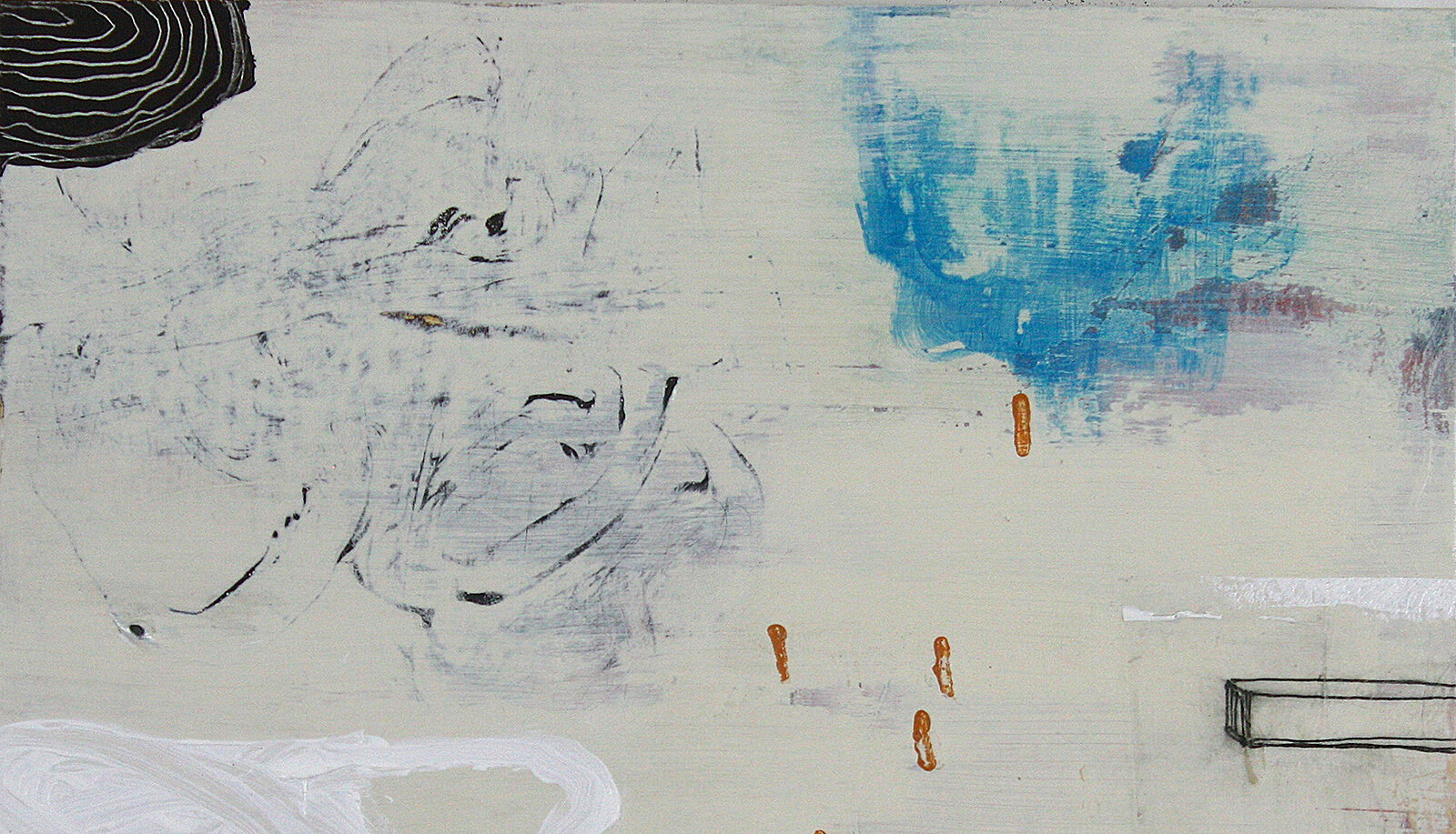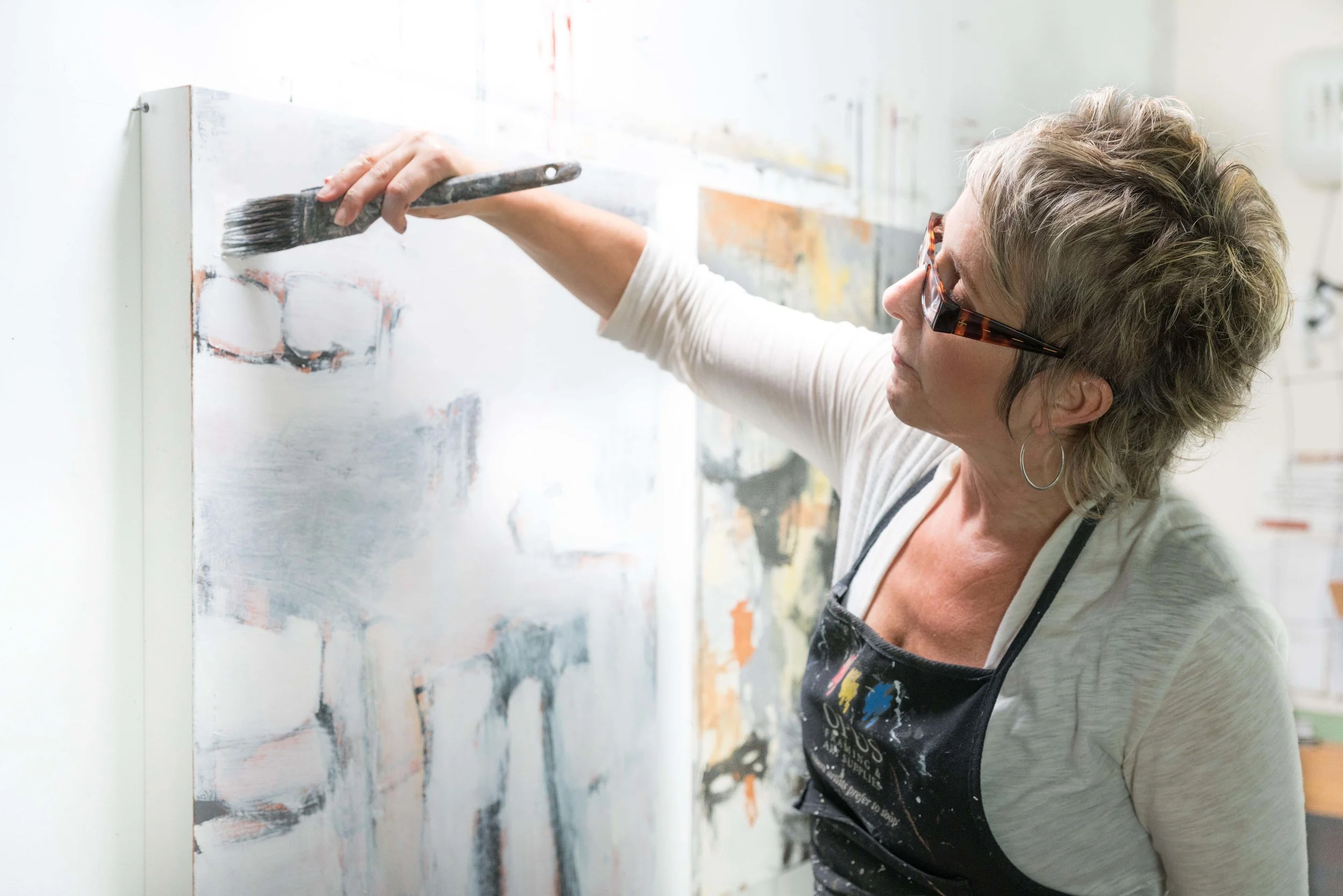THE WEIGHT OF NOT FEELING GOOD ENOUGH
/Recently I bumped into an artist friend who I haven’t seen for some time. The last time we connected she was transitioning from working in ceramics to painting. This was an exciting change for her and she was ready to explore the possibilities of where that could take her.
As we talked I asked about her painting. A look of pained discomfort came over her face and she disclosed that she had abandoned her painting in recent months. Then she said, “Just between you and me, I stopped because I know I’ll never be good enough – I’m just not very good.” With these words I could see the waves of emotion rising up through her like a toxic tide. Her eyes looked wet with the pain of it all, her resignation and hopelessness hurting the very core of her creative being.
The coach in me wanted to ask her so many questions. I had seen her work and it was good. She had skill and vision and was painting subject matter that inspired her. So many questions flooded my brain. I was aware that it was not the place or time to go there – uninvited coaching is never a good idea – but my heart ached for her and I offered what I could, telling her I was sorry to hear that and letting her know that her feelings are common to artists and something I encounter often in my work. I know how utterly painful these feelings can be.
If I had the opportunity I’d want to ask her to tell me more, to find out how long this feeling of not being good enough had been with her. Not good enough for who? Not good enough for what? By what measure and standard are you judging your work? What is your relationship to painting? Why did you begin to paint in the first place? What evidence do you have to support that as truth?
Each time I encounter these feelings of “not being good enough” in my coaching work I am reminded of just how hard artists are on themselves and the emotional labour that art-making requires. And, I’ve been there myself and still have to work with feelings of inadequacy and self-sabotage...so I do know this place intimately.
Every internalized message we received in our early life – every time we were told or felt we were not good enough for someone or something – we began to form a deeply entrenched belief about ourselves. We accepted these statements as the truth about us, even when there was abundant evidence to the contrary.
When we make our art, everything we believe about ourselves shows up in the studio with us. The subconscious beliefs that we internalized come forward and begin to act on our consciousness. Our internal critic becomes noisy and destructive, inviting doubt, fear and apathy, sabotaging our every effort. Under the weight of it all, why do we even bother?
So how do we work with these feelings of not being good enough and return to making our art?
Here are some ideas and strategies to consider that you may find helpful:
First acknowledge the feelings. What are you actually saying to yourself? Perhaps writing out some of the internal dialogue in a journal will help you to see the destructive power of your thoughts. When the thoughts are only in your head you may not fully realize the potency of your negative self-talk. Putting these thoughts to paper sheds light on them, potentially giving them less energy and hold over you – and giving you the opportunity to reframe them and/or outright ignore them.
Watch your tendency to react to what you now know you’re saying to yourself. Watch out for that terrible feedback loop where you dump on yourself for having had the negative thoughts – piling on more self-criticism. What you want to do instead is remain curious and open. This is all about becoming self-aware and discovering your inner dialogue. If you can accept that this is simply a learned pattern – a habitual way of being – then you can learn how to change it.
Ask yourself what evidence you have to support these negative statements as truth. Often we believe it is simply supported by the fact that we are having feelings of not being good enough or less than. But, feelings are not facts. So while we may feel inadequate and as if our emotional state is the truth about us, there are likely tons of actual evidence that the feelings you’re having are not true. They may feel real, but they are not true.
Talk to yourself – after all, we all do it all the time. Our negative internal dialogue is a form of self-talk, and we can harness that power to change course and build our creative reliance. Try countering some of these negative talking points by offering yourself encouragement, support and kindness instead. Psychotherapists tell us that talking in the 2nd person when we do this is actually even more impactful. Our brains are wired for social connection and respond to that stimulus in a positive way. So if I’m thinking and saying to myself “I can’t do this. I suck” then I would respond “Cheryl, you’re being too hard on yourself. You’re working at strengthening your art, so it will be tough sometimes and maybe even a complete failure, but with perseverance and self-compassion you can get there.”
Watch out for social comparisons. We are bombarded with information about everyone else’s accomplishments and successes. We see it in our Facebook and Instagram feeds, as everyone presents their best. This is not reality, it’s curated reality. We are measuring ourselves against something that isn’t even real because we don’t see the back story, the struggle and the perseverance and emotional work that it took to get there.
We only want to compare ourselves to ourselves. Are we moving forward, even incrementally, in our work? When we look at our own path and trajectory there is progress to acknowledge – in our skills, in our commitment, our vision and our approach. Whatever we are focusing our attention on we will find evidence to support that. If we look for our failures, we’ll find them. If we look for our strengths and successes, we’ll find those. Knowing where to focus your attention is key...feed the energy that will help you progress in your work.
Focus on values rather than accomplishments. Our society is steeped in the idealization of achievement and financial success. It is how we have come to measure our worth – comparing ourselves and what we have, to others to see how we’re doing. But is this the best way to measure our success and move ourselves forward?
By focusing on what we value in our lives – what’s important to us and what we most want to create – we can let go of the feelings of having to measure up to some idea of what success should be. Instead we can build our life and work around a value system that supports our needs and helps us to feel good about what we’re creating and doing.
When our life and work is based on our core values, we create more meaning in our life and open ourselves up to feelings of connection and compassion – not only towards ourselves, but towards others. We can then rewrite our story and accept that we are good enough, deserving and worthy. This alone will transform your relationship to your art-making and have ripple effects throughout your life and relationships.
Let your art-making be a part of your healing work. What it has to offer you extends far beyond any conventional measure of success. It will awaken you to what needs clearing and make you whole again.








